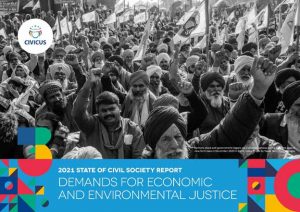A History of the Press in Bangladesh has arrived in the market. Mohammad Golam Kibriya is the author of the book. At a cursory glance a reader will find that it is not only a chronicle but also a book of knowledge and an intellectual exercise. The author has briefly touched everything that came in his way–language, history, politics, societal phenomenon and all others that matter. Bangladesh is poor in media literature. Over the last six decades not even 100 books have appeared on the discipline. But the situation is otherwise in Europe and in the United Statest of America. In the USA one out of every eight book is about the media. Here we have not so long had a complete history of the print media. The book in question is a noble attempt to present the nation a history of its press.
The 704-page voluminous publication has been divided into six Books. The first one deals with ancient India when there was no newspaper but an effective communication system. Language and literature of that age has been briefly but poignantly discussed. It has been reiterated that Sanskrit language and Vedic literature have spread over a vast area of the South-East Asia and the area has still borne that legacy. The brief chapter on Indo-European Language Group is particularly learning and enchanting.
Book two deals with the medieval period when the Indian rulers were Turkey Sultans and the Mughals respectively. Persian was the court language then and there was hand-written newspaper of a fixed format of 12 inches long and eight inches wideth. Turkies had laid the foundation and the Mughals had turned it to a well-settled institution. Initially there was only one group of journalist called Barid. Later, during Mughals, four other groups had emerged–Wakia Navis, Khufia Navis, Sabina Nigar and Harkara. These issues have been presented in a brief treatise.
In the preface the author has stated that the brief discourses on language, literature and culture of the ancient and medieval period have been intended to give foreign readers an insight of the Bangladesh society and civilization.
Modern and machine-printed newspaper has begun in India with the Gazette of James Augustus Hickey– a Briton. Hickey was an independent thinker and an up right man. He staunchly opposed the arbitrary rule of the administrators of the East-India Company. Sordid revenges were taken against Hickey and was ultimately deported to England. The legacy that Hickey had left could not be mopped off, launching of newspapers by the Britons and the Indians continued and in three decades all the three Presidency headquarters–Calcutta, Madras, Bombay–were bibrant with their prevalence. The press and proscription of newspapers, repression on journalists, coercive press laws and their arbitrary applications have been briefly discussed in Book three.
East Bengal, the territory which now comprises Bangladesh, lagged behind in newspaper due to practical reasons. At last in 1847 Gurucharan Roy had launched the first Bengali weekly of East Bengal– the Rangpur Bartabaha. Since then up to 1905, the year when the province of East Bengal and Assam was created, almost 250 newspapers of different frequencies (barring daily newspaper) were launched. All of them, except for 20 monthly magazines, were owned by the Hindus despite East Bengal was Muslim majority. Noticeably, since 1905 not only no new titles have appeared but by that time all but one newspaper went defunct by the year 1947. The respectable exception, which was considered to be the best, was the `Dhaka Prakash’ and that existed up to 1964. All this has been presented and analysed in Book four. And that will form a rewarding study for anybody who has a stake in the print media.
After presenting facts of the individual papers a review has been made that helps in getting an insight of the social, political and economic scenario of East Bengal of that time.
Since 1947 with the termination of British rule and creation of Pakistan a new phase of the press has started. It had practically started anew in 1947 and did not inherit any legacy of the past as all East Bengal papers went extinct by or before 1947. If it at all inherited any legacy that is of Calcutta’s by the fact of the coming of the Azad and the Morning news to Dhaka.
The situation in East Bengal and later in East Pakistan (since 23 March 1956) was not conducive to newspaper development for multifarious reasons the topmost of which is political. The government here and at the centre in Rawalpindi were authoritarian and they hardly gave any opportunity to newspapers to grow as independent and self-reliant institutions. But despite all odds East Pakistan newspapers relentlessly fought for democracy and equitable share of the province. For their role the Ittefaq and the Pakistan Observer had to face closure the former more than once. The editors of both these papers were imprisoned.
In Book six newspaper scenario since 1972 has been narrated. Brief facts of all newspapers up to 1982 has been presented in this book and afterwards they have been reviewed in, by and large, an academic manner. With the achievement of liberation by Bangladesh the press was not liberated, it faced pitfalls of different nature the foremost of which was the government’s attitude towards it. All of the Pakistan time stringent press laws were in force. On top of that a new law named Special Powers Act (SPA) was introduced whose three sections were related to the press and they were all against press freedom.
After the political change-over of 1975 the press started enjoying some freedom but the pace was slow and the dimension was narrow. During the regime of Ershad the limited freedom the media was enjoying had also withered. Journalists were arrested and harassed, newspapers were temporarily closed and an atmosphere of suffocation was created.
Since 1991 West Minster democracy was restored but democratic liberalism and pluralism still lingered; only in the first week of the last month the government has closed one newspaper and one television channel.
Political scenario of the country since 1972 has been briefly presented to show that the state of the media was directly linked with it and due to due to lack of democracy the press could not function freely.
In a brief chapter titled Country’s General Condition an overall picture of the country is an enjoyable reading. Brief narration of the country’s press law has enhanced the importance of the book.
After 1982 a good number newspapers have been launched some of which today enjoy good circulation and social recognition. They have been dealt in section five of Book six. There are certain publications which as newspapers are not of much worth. But due to their fixed political affiliation are weighed importantly. The daily Dinkal, Naya Diganta, Sangram and Amar Desh have been categorised in this group.
Press Law, Journalists Union, Wage Board Award and professional hazards have also been discussed in their historical perspective.
The book, as is usual, has also limitations. Information and facts of papers launched since 1983 has not been given chronologically like that of the earlier papers. Information regarding two Chittagong English dailies of the 1950s Eastern Examiner and the People’s View have not been given as has been done regarding other papers of the time.
Language of the book is simple and intelligible but at places punctuation marks are absent. Somewhere sentences are long which prevent easy comprehension. A chapter on journalism teaching and training could easily be added in the book. The author himself has a background in the discipline but what prevented him from doing that is not understood.
These are tit bids, the book is a repository of information of the press of the country. Media men, journalism teachers and students, social researchers and general readers are expected to be benefited out of the book. We ardently hope that the attention of the relevant people will be focused on it. The author deserves thanks for presenting the nation such a book of enormous importance.
History of the Press in Bangladesh
By Mohammad Golam Kibriya
Published by Eastern Point
Pages 704
Price Tk. 800.00
Reviewed by: Farzana Afroze Zerin




